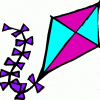Hi! I'm sharing to you the below, check if you can find something useful from the contents.
Btw, this is a printed document with a table of changes at the last pages, reviewed monthly.
PROJECT: IN-HOUSE JUICE PRODUCTION
DATE: July 30, 2023
PROCESS STEPS AND ACTION PLAN
- Procurement, Supplier Approval, Purchasing, Transport, Receiving, Storage
- Observe strict compliance on the receiving process:
- Storage Calibration and Maintenance
- Stores/Fridges must be compliant to temperature standards AT ALL TIMES
- Cleaning and Sanitation
- Records and schedules must be available, by trained stewarding staff.
- Pest Control
- Pest control is in place. Additional task will be considered.
- Staff Training & Personnel
- FOOD SAFETY/HACCP Training must be received by assigned supervisor and staff
- Product Identification, Approved Supplier, Traceability & Recall
- To be maintained by STOREKEEPER (RECEIVING)
- Condition of premises and personal hygiene
- Stewarding and Maintenance
SUMMARY OF STEPS IN PRODUCTION
The following narrative introduces the processing of squeezed unpasteurized juices.
A Juice is a convenient drink and can be drunk without further processing.
- From the procurement to processes before serving and consumption, take into account and determine to address handling, storage, processing and distribution of finished product and identify the potential of Microbiological, Chemical or Physical contamination and hazards which may occur during the processes; ensure all working practices adhere to food safety policies.
- The fruit needs to be washed and sanitized with either a premixed commercial solution or one that is mixed to 200 PPM available free from chlorine.
- Upon receiving, complete receiving checklist by STOREKEEPER to ensure correct quantities are received and each product (the fruit’s container) is labeled and traceability number. Fruits must be received either in boxes or in bins and held at ambient temperatures.
- The fruits are hand graded/inspected by RECEIVING and KITCHEN STAFF before sanitizing with a chemical sanitizer followed by a clear water rinse.
- Following sanitizing/washing, fruits are brought to extract the juice that is then collected in ready-to-serve containers and maintained under refrigeration at 5°C.
DETAILED PROCESS STEPS AND RISK ASSESSMENT
Product arrives from and in temperature-controlled area [RECEIVING AREA]
HAZARDS
Physical Hazards: vermin/rodents and flying insects, foreign bodies found on pallets and containers.
Chemical Hazards: Chemical contamination from Chemical/ Pesticide at source of origin.
Microbiological Hazards Microbiological contamination during process at the source of origin
CONTROL MEASURES
Loading/Unloading areas must be clean to prevent external contamination
Pre-requisite programs in place to control all named hazards.
Daily hygiene schedules and cleaning programs, glass policy and daily audits.
Internal Pest control programs.
Approved Supplier and HACCP in place, verified by and from PROCUREMENT to RECEIVING to eliminate/reduce potentials of foreign bodies, biological and microbiological contamination, chemical hazards and contamination from pesticides used at source (Warehouses/Farms/Imports)
Arrival and traceability check
HAZARDS
Physical contamination from Staff/Inspectors – Foreign/physical bodies found within product and /or packaging from source of origin or during transportation.
CONTROL MEASURES
Receiving staff is knowledgeable of food safety programs. Any foreign body contamination identified escalated to Management, return to supplier policy observed.
Transfer to cold store awaiting processing.
HAZARDS
Physical Hazards - Physical contamination from RECEIVING. Pests/rodents and or Flying insects due to poor hygiene/debris build up.
CONTROL MEASURES
Prerequisites in place to control named hazards include; Daily hygiene and cleaning programs, Pest control programs in Receiving area is maintained. Staff awareness/training on Food Safety maintained.
Hand Grading and Visual Inspection
HAZARDS
Physical contamination: foreign bodies/dusts, soil from grading staff/inspector and from the environment to transporting to storage.
CONTROL MEASURES
Staff hygiene policy/programs in place.
Washing and Sanitation (CRITICAL CONTROL POINT)
HAZARDS
Chemical Hazards: Chemical contamination from Chemical/ Pesticide at source of origin. Microbiological Hazards Microbiological contamination during process at the source of origin
CONTROL MEASURES
Monitoring: Wash 200 PPM chlorine. The critical limit is established at 200 PPM or equivalent. Staff trained of this CCP procedure.
Extraction Procedure (CRITICAL CONTROL POINT)
Fruits are squeezed to extract the juice that is then collected in ready-to-serve containers and maintained under refrigeration at 5°C until purchased.
HAZARDS
Physical contamination from Extracting Staff - JUICER - Foreign body/Dust contamination from production environment.
CONTROL MEASURES
Staff personal hygiene policy/ grooming programs in place staff trained and records of training. Handwashing procedures, cleaning and sanitizing schedules are in place.
Chilling and Holding
HAZARDS
Microbiological growth due to breakdown of refrigeration unit. Physical contamination from staff.
CONTROL MEASURES
Equipment inspected on daily intervals. Procedures for maintenance, refrigeration breakdown, and 4x daily temperature checks. Since the high acidity of the juice can retard the growth of bacteria, the pH will be monitored to insure it remains at a low level. Corrective actions are initiated to adjust the pH of the product when there is a deviation. Personnel hygiene policies and procedures in place with all staff aware/trained with records of training
Product transfer from holding to pre-serving area.
HAZARDS
Physical Hazards - Physical contamination from F&B Service/Stewarding Staff.
CONTROL MEASURES
Product is bagged and sealed and the risk of contamination is highly unlikely. Prerequisites in place to control named hazards include; Procedures for maintenance, refrigeration breakdown, and daily temperature checks. Covering of product containers, or covers tightly closed.
CCPs and RISK ASSESSMENT
THE FOLLOWING ARE CRITICAL CONTROL POINTS
- Make sure all fresh fruits to be washed and sanitized before extraction
- All extracted juices should be well-covered and labelled (not more than three days)
- All ready-to-consume juices should be stored in the ballrooms kitchens fridges.
- Record the fridges temperature for fruit storage and ready juices.
OTHER SIGNIFICANT POINTS TO BE PRACTICED AND OBSERVED
EXTRACTION
- Do not make/extract over required quantity. Sampling will be required.
- Order green knives and cutting boards for the fruits.
- Order extra containers and disposable food grade gallons storage.
- STAFF REQUIREMENTS
- Required staff must receive Hygiene and Food Safety training.
- Any staff working inside should wear gloves, hairnet, apron, mask.
- Jewelry policy enforced and monitored via the Hygiene audit.
PRODUCTION AND HOLDING
- Clean and sanitize the workplace, tools & machines and tolls before and after each use
- Weekly Facility Hygiene checks and general housekeeping.
- Turn off the fridge when in case no products inside
WASTE MANAGEMENT
- Waste from extraction must be properly disposed
- Food crates are removed from production area, return to receiving.
- Glass breakage procedure are followed and completed if there is a breakage.














